The Best Jewish Children’s Books of 2019
This year’s list features culinary espionage, dragons, and a purse shaped like a french-fry takeout box
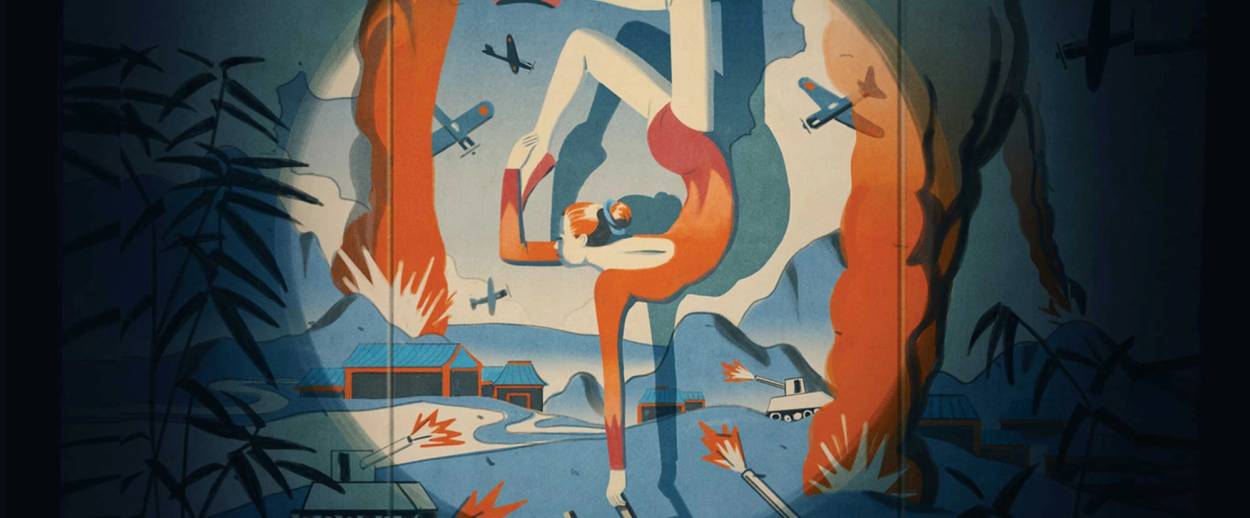
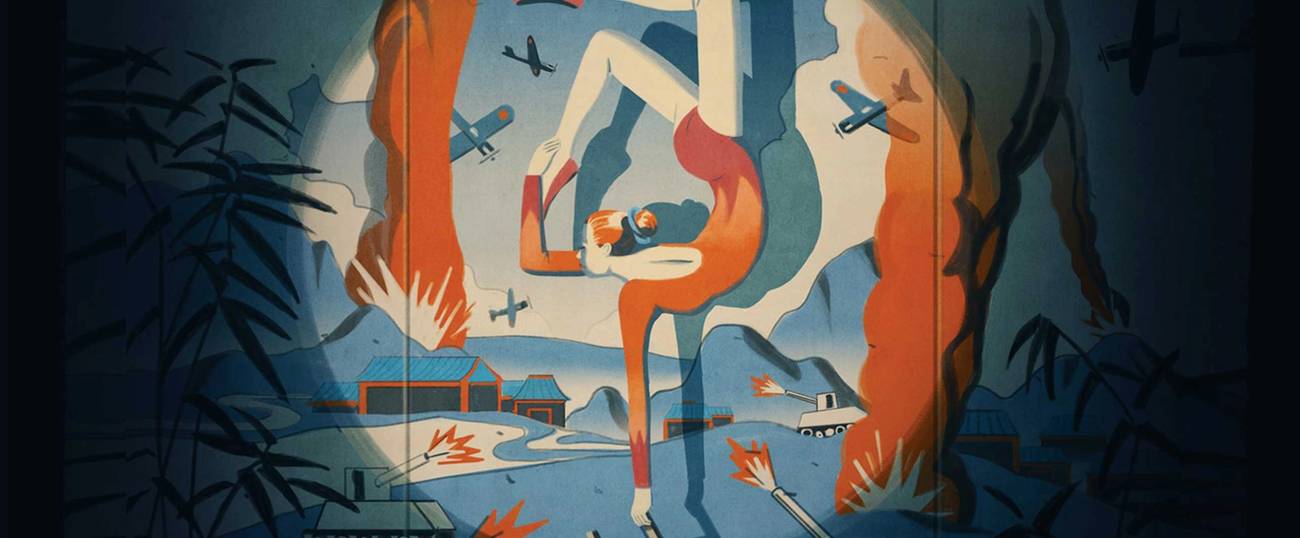


Yay! So many good books this year! Boo! So many of them are Holocaust books!
Holocaust books do not make fun Hanukkah gifts. They are the kid equivalent of giving your wife a Peloton. That is why this roundup contains zip-zilch-zero virtuous Holocaust books; next month, for International Holocaust Remembrance Day, I’ll do a roundup of 2019’s worthy, noble Nazis-Are-Bad books. Right now, though, for Hanukkah, let’s explore a wide variety of genocide-free books that kids will love reading.
Picture books
I am shocked and delighted by the sheer variety of Nazi-free picture books to choose from! (Oh, fine, here’s the obligatory disclaimer: Holocaust books are important. Publishers also produce too many of them. I can hold these two ideas in my head simultaneously, like a boss.) This batch of picture books will encourage kids to associate Judaism with joy, music, sports, and allyship, in a variety of different time periods and cultures.
I’ve already written about Gittel’s Journey by Lesléa Newman, with luscious illustrations by Amy June Bates. It’s a treat for kids ages 5 to 9. Get it.
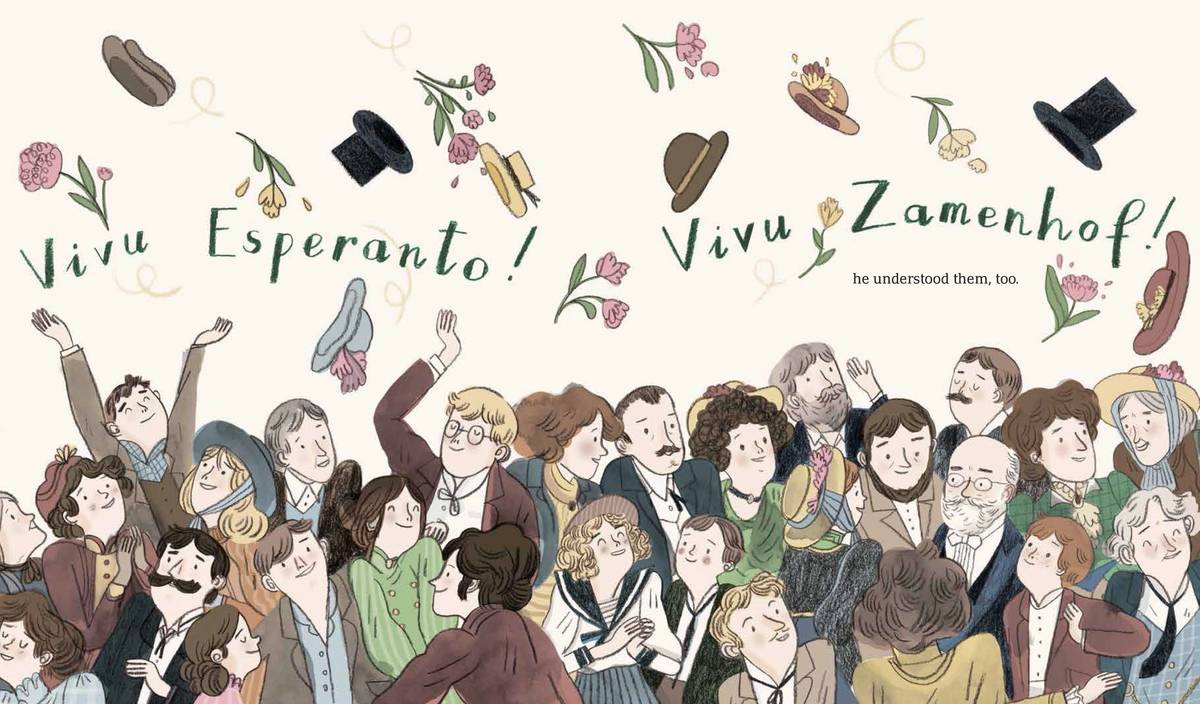
Doctor Esperanto and the Language of Hope by Mara Rockliff, illustrated by Zosia Dzierzawska, begins like a fairy tale: “Once there was a town of many languages but few kind words.” In this town lives a little Jewish boy named Leyzer Zamenhof. He grows up hearing Russian, Yiddish, Polish, German, and more, all flung angrily and distrustfully hither and yon. “He was a gentle boy, and the sharp words cut him like stones,” Rockliff writes. Leyzer dreams of using a common language to help people all over the world connect. He renames himself Dr. Esperanto, meaning “one who hopes,” and creates that language himself. This utterly charming book, with soft and welcoming illustrations, teaches kids a bit of Esperanto and offers back-matter resources for wee language nerds wanting to learn more. (Ages 6-9)
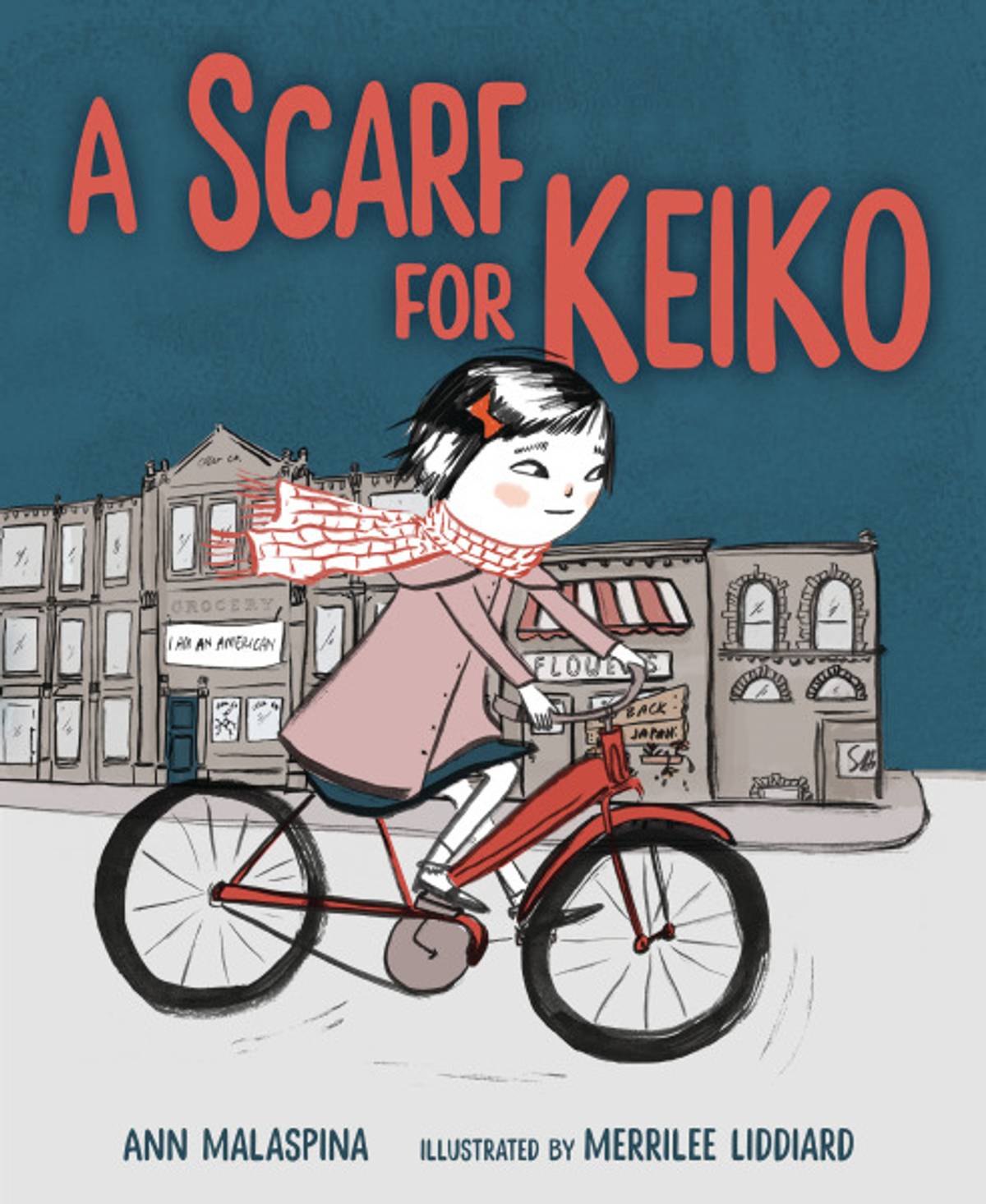
A Scarf for Keiko by Ann Malaspina, illustrated by Merrilee Liddiard, made me cry, in a good way. It’s 1942, and a Los Angeles elementary school class is knitting socks for the war effort. Sam hates to knit and is rotten at it. Keiko is the best knitter in the class, and kind to Sam. But everyone knows the Japanese bombed Pearl Harbor, and most of the kids won’t talk to Keiko. Someone throws an egg at her as she rides her red bike; the windows of Mr. Saito’s grocery store are smashed (despite his sign reading “I AM AN AMERICAN”) and someone has scrawled GO BACK TO JAPAN on a neighboring flower shop. Over Shabbat dinner, Sam’s dad explains, “President Roosevelt is worried that people with Japanese ancestors are spies.” One day, Keiko disappears, sent with her family to a camp for Japanese Americans. In front of Sam’s house, she’s left a pair of beautifully knit socks for Mike, Sam’s brother who’s fighting in Europe, as well as her red bike: “Until I get back.” Sam knows that it’s cold in the desert, where the internment camps are … and suddenly, learning to knit feels urgent. The text’s staccato sentences echo the sound of knitting needles (“Click. Clack. Click. Clack”), and the oversize illustrations in warm reds, blues, and beiges are assured and compelling. An afterword draws more explicit connections between two marginalized populations, introducing the reader to the L.A. neighborhoods of Boyle Heights and Little Tokyo (“where Jews and Japanese Americans lived side by side”); and offers vintage photos and more historical explanation. (Age 5-9)
A Fist for Joe Louis and Me by Trinka Hakes Noble, illustrated by Nicole Tadgell, is another tale of cross-cultural friendship, this between a non-Jewish African American boy and a Jewish white boy in the Midwest. “Detroit made two things,” our narrator Gordy tells us. “Great boxers and cars … But when the Great Depression came, people stopped buying cars. Times got hard in Detroit. But we still had Joe Louis in our corner.” When Gordy’s dad loses his job on the assembly line, his mom goes to work for a Jewish tailor. The tailor’s son Ira and Gordy wind up bonding over the impending Fight of the Century between Joe Louis and the German contender, Max Schmeling. There’s a schoolyard scuffle with a bully, a thrilling 1938 radio broadcast, and a quiet, friendly, satisfying conclusion. Tadgell’s lovely watercolor illustrations contrast nicely with the sharp, lively expressions on the kids’ faces. (Ages 6-9)
Just Like Rube Goldberg by Sarah Aronson, illustrated by Robert Neubecker, is deliciously goofy. Young Rube desperately wants to be a cartoonist, but his immigrant dad wants him to earn a steady living. Rube gets a degree in engineering at Berkeley, but the lure of comics is just too strong. He goes into newspaper cartooning, and after the San Francisco earthquake of 1906, moves to New York City, where he quickly becomes a comics sensation. He invents Professor Lucifer Gorgonzola Butts, a daffy inventor whose hilariously complicated inventions are clearly informed by Goldberg’s engineering background. “Although this was the age when new machines were being invented to make life easier,” Aronson writes, “Rube’s screwball contraptions purposefully solved problems in the most surreal and ridiculous ways.” Kids will pore delightedly over the pictures of Rube’s wacky gadgets. No one draws city life as well and as joyfully as Neubecker, whose way with period clothing and inventions is just as marvelous. (Ages 3-8)
Parrots, Pugs, and Pixie Dust by Deborah Blumenthal, illustrated by Masha D’yans, is for the glitter lover on your Hanukkah list. Remember how I begged for someone to do a picture-book bio of handbag designer Judith Leiber, instead of yet another farshtunkiner book about nasty Nazi-nuzzler Coco Chanel? Here it is! Leiber led a fascinating life, and Blumenthal leads us through it ably, but the star of this book is Masha D’yan’s exuberant, luscious, pointillism-spiked watercolors. If your kid would enjoy a Swarovski-encrusted purse shaped like a panda, a rainbow ice cream cone, or a clunky ’80s cell phone for Hanukkah, this is the book to give them instead. (I mean, unless you can afford the Leiber bag to go with it.) The pink cover even has iridescent foil detailing. Swoon. (Ages 5-9)
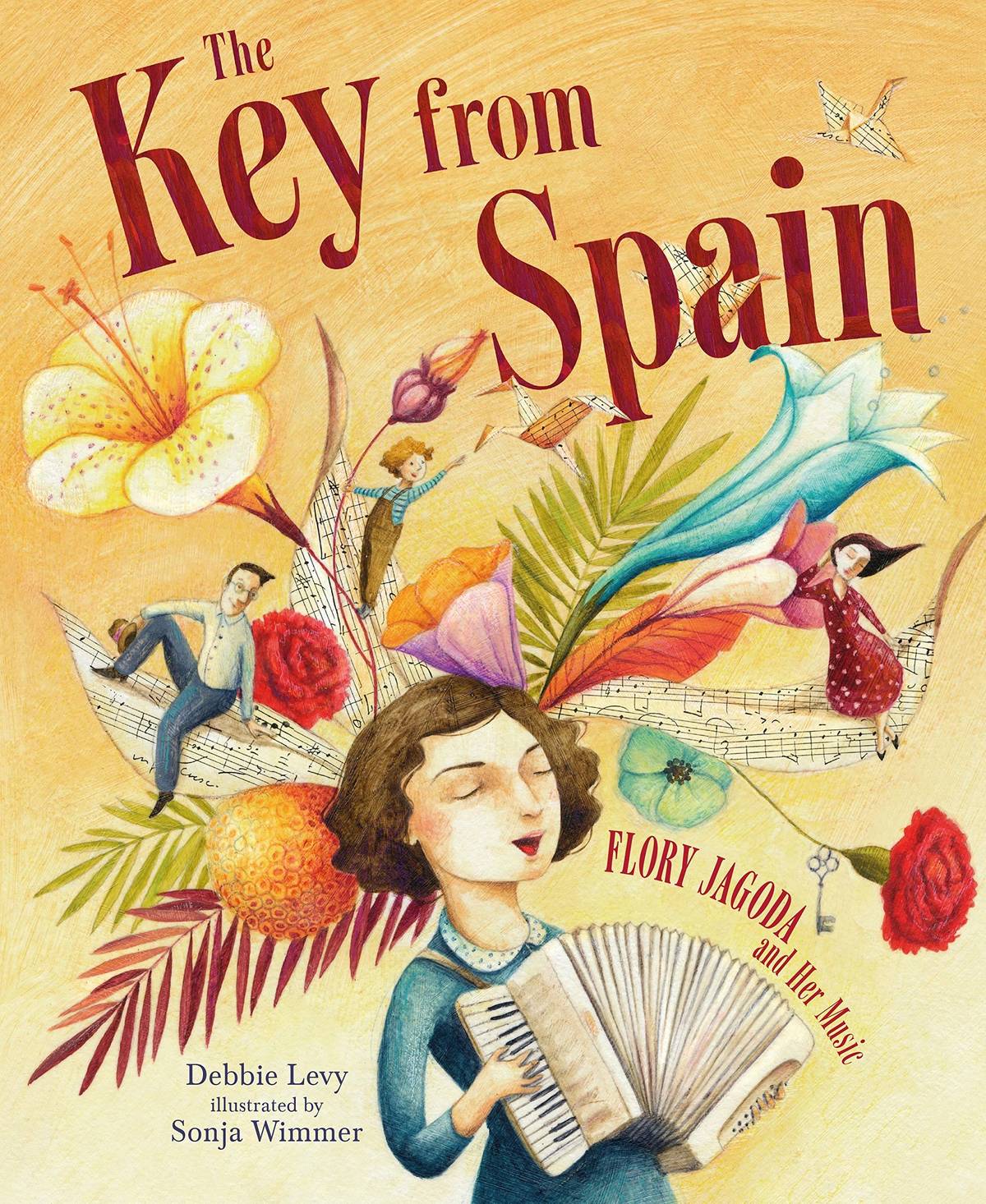
The Key from Spain by Debbie Levy, illustrated by Sonja Wimmer, also made me squeal the moment I saw the cover. The true story of a Sephardic woman musician? With twirling, swirling, bright artwork depicting branches made of sheet music, brilliant flowers, snippets of maps, and images of keys? By Debbie Levy, author of I Dissent!, which made Tablet’s Best Children’s Books list of 2016? Yes please! It tells the story of the Altaras family, ancestors of musician Flory Jagoda, who fled Spain during the Inquisition with two treasures: the key to their home and the language of Ladino. The family branches throughout the world, sometimes withering, sometimes thriving. For years, the Altaras family live in harmony with Muslim and Christian neighbors. But Flory’s immediate family has to flee again in 1941, from Bosnia to Croatia; thankfully, Flory’s harmoniku, her accordion, comforts her. Wimmer grounds us in different time periods by putting dates in the corners of the pages and incorporates Ladino words into the artwork. An afterword offers photos of the real Flory, and a picture of a key that’s actually a QR code you can scan to hear Flory sing the Ladino Hanukkah song “Ocho Kandelikas.” (Ages 5-9)
Middle-grade books
Earlier this year I wrote about White Bird by R.J. Palacio, for kids ages 8-12. It’s great and it’s a Holocaust book, so again, moving on.
To Night Owl from Dogfish by Holly Goldberg Sloan & Meg Wolitzer, is the funniest children’s book I read this year. Three words: gay Parent Trap. But in this one the kids are plotting to make their parents break up instead of marry. It’s an epistolary novel (told mostly in email, but also in texts, news stories, and voicemails) starring two vividly drawn 12-year-olds: Avery Bloom, a neurotic NYC kid, and Bett Devlin, a fearless and exuberant animal-loving Californian. Each has a single gay dad, and the two dads are falling in love. To get their daughters to know each other, they send them to the same summer camp before heading off on a romantic adventure trip to China. Nothing at all goes as planned. The peripheral characters are hilarious. The Jewishness is sort of incidental, not central, but it’s there. The whole thing is a hoot. Adults will enjoy it, too. (Ages 10-14)
Anya and the Dragon by Sofia Pasternack, is not my personal jam. I have a thing: I hate dragons. My very favorite book on last year’s list was Spinning Silver by Naomi Novik, who also writes widely adored books with dragons in them, and I keep trying to read them, and nope. (Game of Thrones was not for me either.) This is my mishegas and I own it. Like Spinning Silver, Anya and the Dragon is a fantasy grounded in Eastern European folklore, centered on a poor but brave Jewish girl. Everyone I trust (who likes dragons) loves it. (Ages 9-13)
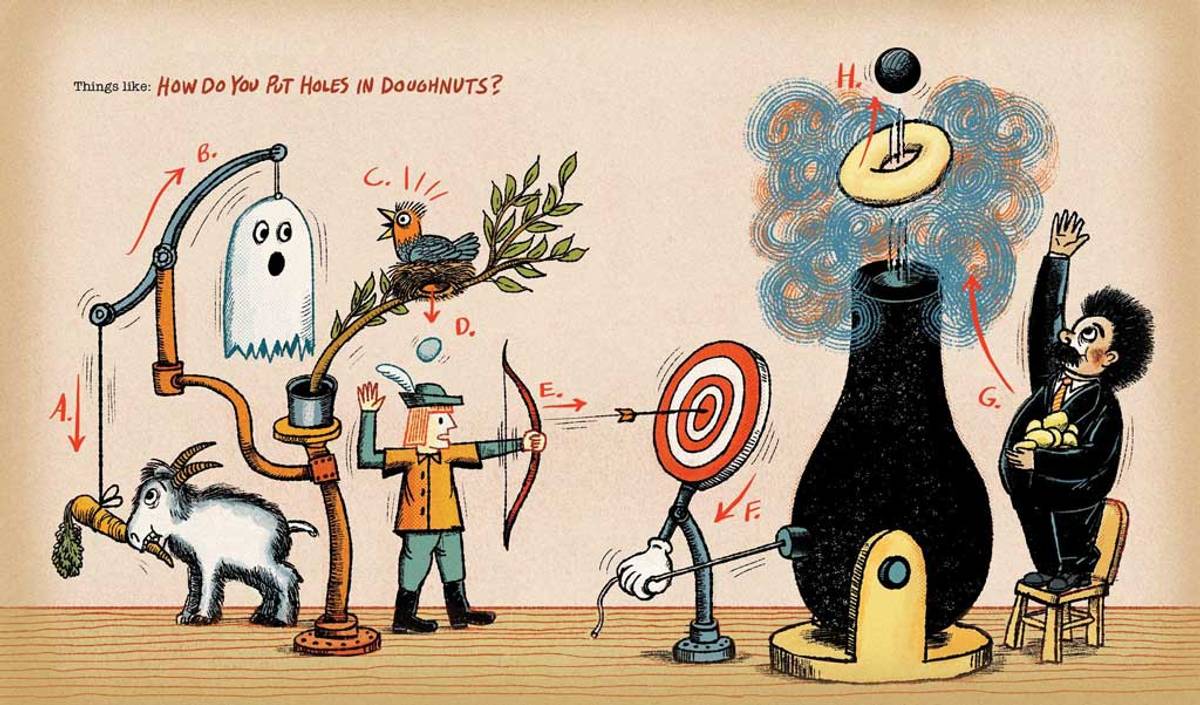
Rachel’s Roses by Ferida Wolff is a sweet, old-fashioned story in the All-of-a-Kind Family meets Doll Shop Downstairs vein. Rachel Berger, a third-grader growing up on the Lower East Side at the turn of the century, hates having to babysit her annoying little sister Hannah, and super-duper hates having to dress like her on Rosh Hashanah. Mama sends her to Mr. Solomon’s button shop to buy trimmings for the girls’ New Year’s outfits, and Rachel spots the gorgeous buttons of her wannabe-grownup dreams: clear glass orbs with tiny roses painted on them. Unfortunately, they cost way more than the few pennies Mama gave her. Rachel’s determined to get them, though: haggling with the shopkeeper, putting them on layaway, finding paid work (delivering phone messages from the one telephone in the neighborhood) to earn extra cash. Then (temporary) disaster strikes … but everything ties up satisfyingly and not too didactically. For middle-grade readers who are easily stressed out by danger and trauma, this book is gentle but still gripping. (Ages 7-10)
Once Upon an Apple Cake by Elana Rubinstein, illustrated by Jennifer Naalchigar, is fast paced, easy to read, over-the-top, and tasty. Saralee Siegel is a kid with an amazing olfactory sense, which is helpful when your family owns a restaurant. She can sniff out every ingredient in a recipe and help her Zaydie with all the cooking … but she can’t discern that one mystery ingredient in his spectacular, mysterious Rosh Hashanah apple cake. Now Zaydie’s in the hospital (spoiler alert, he recovers); the new year is fast approaching; cake orders are pouring in; Saralee has yet to figure out that elusive ingredient; and sinister recipe spies from a new neighborhood restaurant are sniffing around the premises. Will Saralee’s schnozz save the day? Naalchigar’s cartoon-y illustrations add to the fun. (Ages 7-10)
Sarah Builds a School by Ann D. Koffsky and Leslie Ginsparg Klein is a surprise (to me, anyway). It’s the biography of Sarah Schenirer (1883-1935), who created the Bais Yaakov schools for girls. Presumably Orthodox folks know all about Sarah Schenirer; I, an apikoros, had never heard of her. Klein and Koffsky (author of 2017’s clever picture book Judah Maccabee Goes to the Doctor, which compared a warrior’s shield to the power of vaccines) tell her story with crisp, un-boring clarity. Growing up in a time when there were no Jewish schools for girls in Kraków, Sarah is determined—against great odds—to start one. Her family flees to Vienna during WWI, where she’s exposed to more free-thinking—but less religiously clueful—girls; when the family returns to Poland in 1917, she vows to make sure girls get a good Jewish education. Despite dismissals and challenges, she succeeds. In half a decade, she educates over a thousand girls; by 1933, there are 265 schools and almost 38,000 students in Poland alone. For Orthodox kids who want a deftly written book about their own history, and for all kinds of kids who enjoy biographies of unheralded heroines, Sarah Builds a School fits the bill. (Ages 7-11)
Young adult books
Dissenter on the Bench by Victoria Ortiz is my favorite Ruth Bader Ginsburg book this year. (By my count, there are nine. Which is as many women as RBG said would be enough to have on the Supreme Court. Which is nice! Add these nine to the two RBG books for kids published in 2018, the two from 2017, and the three from 2016 and it makes almost TWO Supreme Courts. How cool would it be if Jewish women who are not Ruth Bader Ginsburg—or Anne Frank!—and who have had zero books written about them could get in on this action? But I digress.) Ortiz’s book is great for a kid actually interested in law; the book focuses on jurisprudence almost as much as it does RBG’s life. Each chapter starts off with one big case RBG worked or ruled on; the first three cases revolve around teenagers: a 13-year-old who was strip-searched at school, a 16-year-old who fought against her school’s random drug tests, and an 18-year-old who sounds like kind of a schmuck who sued because his freedom of expression—meaning freedom to hold a jerky sign near school—was impinged upon. The case studies are dramatic and show off RBG’s values and legal writing; they’re interwoven with a thoughtful narrative about her life, family, work-life balance, and Jewish identity. The deep, rich bibliography includes the full text of the Bill of Rights. (Ages 10-17)
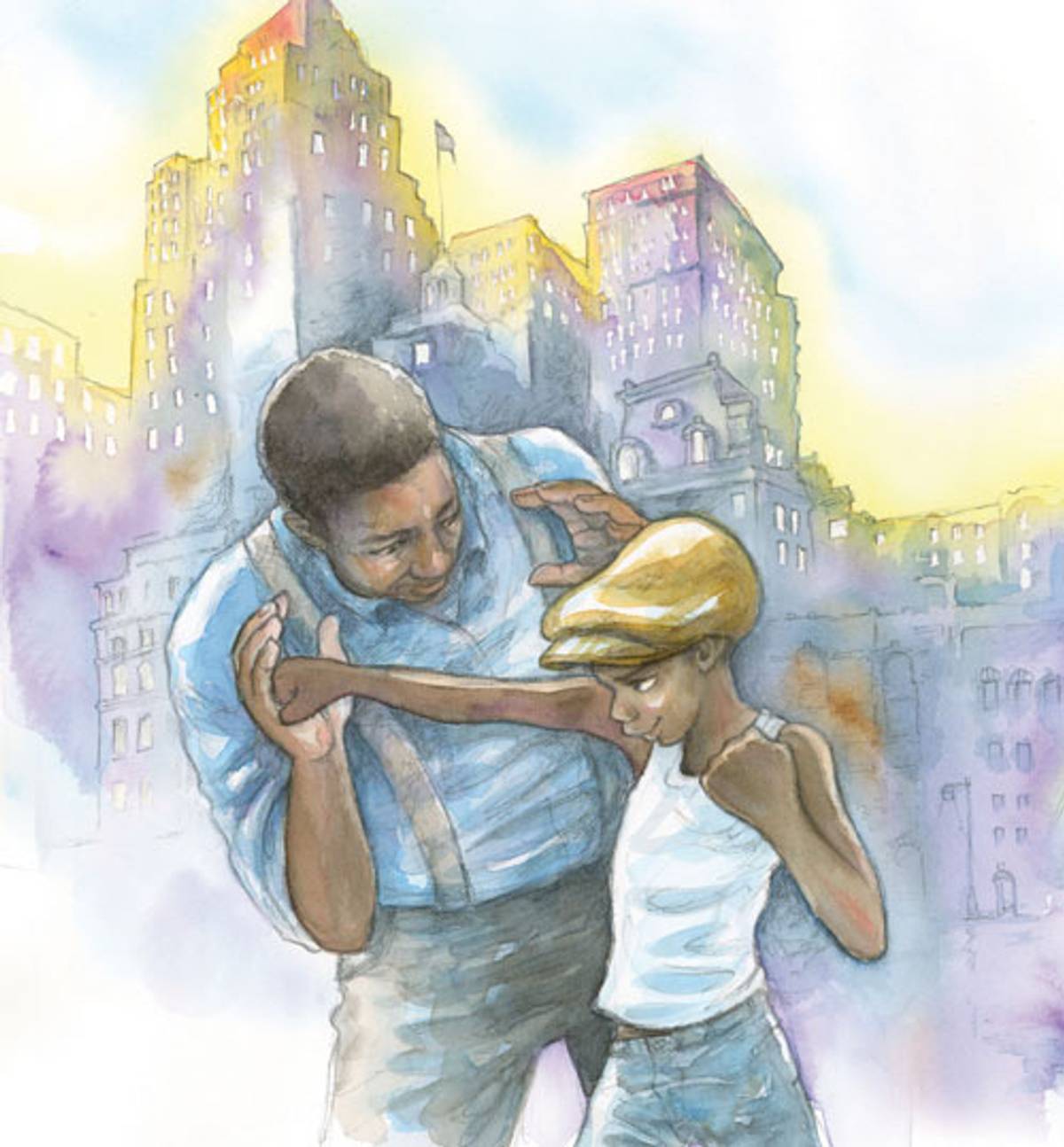
Screen Queens by Lori Goldstein is a cinematic, girl-power revenge fantasy against the douchebros of STEM. Great literature it is not (the publisher describes it, accurately, as “The Bold Type meets The Social Network”) and its Jewishness is pretty incidental, but it’s got a cool cover and good values, and it’s a quick, fun read for budding feminists. Three very different high school seniors—Lucy Katz, Maddie Li, and Delia Meyer—win spots in a male-dominated startup incubator competition run by the handsome, toothy creator of Pulse, a social media website that assigns people an ever-shifting coolness value from 1 to 10; Gen Zers and millennials check their Pulse scores obsessively. (It’s very Black Mirror.) The winner of the competition gets an internship at Pulse; Lucy, Maddie, and Delia have nothing in common, but when they start to figure out the depth of sexism and corruption at Pulse, they band together to change techbro culture and see that justice is done. Satisfying. (Ages 13-17)
Hope and Other Punchlines by Julie Buxbaum is about the friendship (and more?) between two kids who’ve been damaged by 9/11 in different ways. As a 1-year-old, Abbi Hope Goldstein became the subject of a viral photo: a dust-covered baby wearing a birthday tiara and holding a bright red balloon, being rushed to safety by a stranger as the South Tower collapses behind her. She becomes known as Baby Hope, the repository of other people’s emotions about 9/11. Now, at 16, she only wants anonymity. Working as a summer camp counselor, she meets Noah Stern, an aspiring stand-up comic whose life was shattered by the same terrorist act. Both kids have secrets; both are Jewish though religion is not the focus of the book. Hope and Other Punchlines reminded me quite a bit of Erica Perl’s marvelous All Three Stooges (on Tablet’s best books list last year), which also daringly pondered the healing power of humor in times of tragedy. It’s funny and deep, with a diverse and quirky band of supporting characters, and it fits the rare sweet spot of tonally perfect books for younger teens. (Ages 12-15)
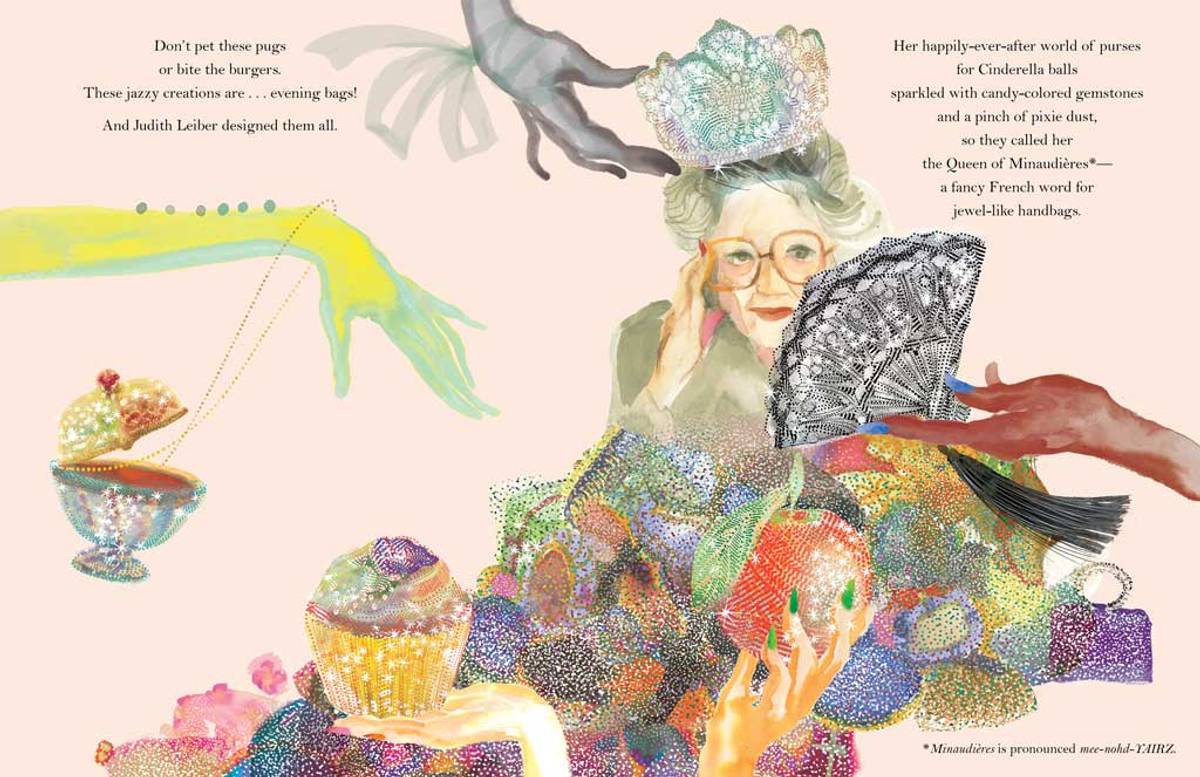
Someday We Will Fly by Rachel DeWoskin is the most literary option on this list; get it for a young poet or voracious reader who enjoys books for grown-ups as well as teenagers. Lillia’s parents are circus performers in Warsaw in 1940; one terrible night, her mother disappears after a show; her father has to flee with Lillia and her baby sister Naomi to Shanghai. Shanghai teems with refugees; there’s not enough work or food; Lillia’s dad is desperate and distracted with grief; everything feels scary and strange. Lillia goes to a school for foreigners for a while and meets girls with more privilege. She gets to know the other lost souls who live in their building. She befriends a Chinese boy named Wei and his sister Aili. It becomes clear that something is wrong with Naomi, some unnamed developmental disability. Lillia scrounges for food; she makes puppets and puts on shows to create beauty and meaning in her life and to entertain her sister; she furiously works on her acrobatic contortions; she takes a secret, fraught job in a “gentleman’s club” to provide for her family when her dad can’t. The Japanese army poses an ever-growing threat. The book, which reads like a beautiful and frightening fever dream, depicts a chapter of Jewish history we rarely read about. (Ages 14-17)
Games of Deception by Andrew Maraniss, like Anya and the Dragon, is not my bag, baby … but it earns my respect. The story of the U.S. Olympic basketball team’s first appearance in 1936, it follows the team—and its one Jewish player—on a journey via the S.S. Manhattan to the games in Berlin. Games of Deception is simultaneously a history of the game of basketball, a travelogue set at the cusp of massive world change, a look at racism in both America and Germany, and a primer in the uses of propaganda. Can sports and politics be separate? Should they be? Tons of photos and detailed back matter make this a must for readers interested in the intersection of sports and social history. If your kid enjoyed the Young Readers adaptation of The Boys in the Boat, they’ll love this. (Ages 12-18)
Sick Kids in Love by Hannah Moskowitz is the one book on this list I completely forgot I was reading for work: I fell madly in love with it and didn’t want it to end. It’s a snarky, sparky response to a zillion dewy-eyed cancer-ridden-teens-ennobled-by-suffering books out there. (“They don’t die in this one” the tagline on the front cover says.) Isabel, who writes a column for her school paper called “Sick Girl,” has rheumatoid arthritis. Sasha, who she meets-cute in the infusion room of the hospital, has Gaucher’s disease. Their banter is witty as hell; it feels like The Thin Man or His Girl Friday for teenagers. The depiction of illness and disability is thoughtful and nuanced. Isabel’s columns, which open several chapters, are eye-opening, hilarious and moving. Jewishness—both religious and cultural—is depicted positively instead of as a burden (or as, y’know, justification for mass murder). Buy it immediately. (Ages 13-17)
Happy Hanukkah, all.
Marjorie Ingall is a former columnist for Tablet, the author of Mamaleh Knows Best, and a frequent contributor to the New York Times Book Review.